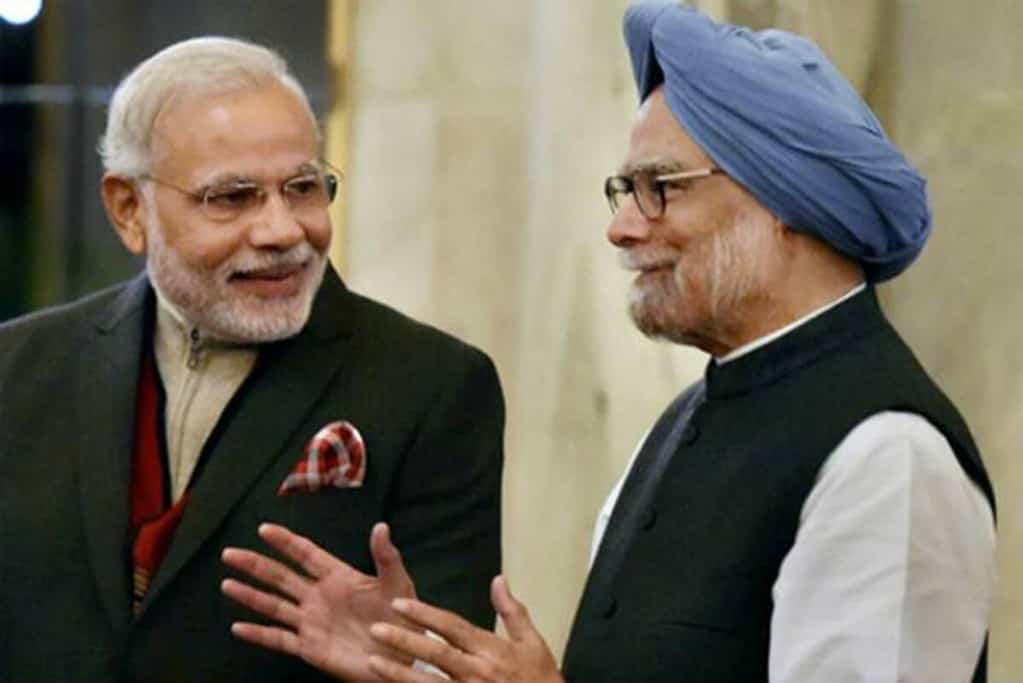A Tale of 2 Decades, over the past two decades, India has experienced significant economic transformations, marked by distinct phases of growth and development. In this blog, we will delve into the comparison of two crucial periods – 2004 to 2014 and 2014 till now – to unravel the dynamic shifts in India’s economic landscape. These periods have witnessed changes in government, policy formulations, global economic dynamics, and internal challenges that have shaped the nation’s progress. Let’s embark on a journey through time to understand how the Indian economy has evolved.
Table of Contents
A Tale of 2 Decades – The UPA Era (2004-2014):
The first period under scrutiny spans the ten years from 2004 to 2014, primarily characterized by the United Progressive Alliance (UPA) government’s tenure. During this phase, India experienced robust economic growth, averaging around 7-8% annually. The era was marked by policy initiatives such as the Mahatma Gandhi National Rural Employment Guarantee Act (MGNREGA) and the Right to Information Act, aimed at addressing rural unemployment and promoting transparency. Additionally, India weathered the global financial crisis of 2008 relatively well, showcasing the resilience of its economy. However, challenges such as high inflation rates and a growing fiscal deficit persisted.
A Tale of 2 Decades – The NDA Era (2014-Present):
In 2014, the political landscape witnessed a significant shift with the Bharatiya Janata Party (BJP) coming to power under the leadership of Narendra Modi. The ensuing period has been marked by a slew of economic reforms, most notably the Goods and Services Tax (GST) and demonetization. These measures aimed to streamline taxation and curb corruption, albeit with mixed outcomes. While the economy faced short-term disruptions, the long-term impact of such reforms is still a subject of debate. The ‘Make in India’ initiative was launched to boost domestic manufacturing, and efforts were made to improve the ease of doing business in the country.
A Tale of 2 Decades – Growth Trajectory:
Comparing the growth trajectories of the two periods reveals interesting insights. The UPA era saw steady growth, with a focus on inclusive development. On the other hand, the NDA era witnessed a mix of high growth rates in some years, coupled with a slowdown in others. Factors such as global economic trends, 3 years of covid, domestic policy decisions, and the implementation of structural reforms played pivotal roles in shaping these growth patterns. India became the fastest-growing major economy in the world for a brief period during the NDA era, showcasing its potential on the global stage.
! Read my story on India economy by 2030 Exclusive India set to become 10 trillion economy by 2030
A Tale of 2 Decades – Global Challenges:
The two decades in focus were not insulated from global challenges. The UPA era grappled with the repercussions of the global financial crisis, but the economy demonstrated resilience. In contrast, the NDA era faced headwinds such as trade tensions, geopolitical uncertainties, and the ongoing COVID-19 pandemic. The latter posed unprecedented challenges, affecting not just India but the global economy at large. The ability of the Indian economy to navigate these global challenges reflects its interconnectedness and the need for adaptive policy frameworks.
A Tale of 2 Decades – Social Indicators and Inclusivity:
Beyond GDP growth, it’s crucial to assess the impact on social indicators and inclusivity. The UPA era witnessed improvements in certain human development indices, reflecting a focus on social welfare programs. In contrast, the NDA era has seen continued emphasis on social schemes such as Swachh Bharat Abhiyan and Pradhan Mantri Jan Dhan Yojana. However, the effectiveness and equitable distribution of these initiatives remain subjects of scrutiny. As India moves forward, striking a balance between economic growth and social inclusivity will be paramount for sustainable development.
! Watch Modi Guarantee: ‘Modi Ki Guarantee’ Govt At Your Door Step Through Sankalp Yatra,’ PM Modi’s New Plan For India – YouTube
A Tale of 2 Decades – Conclusion:
In the grand tapestry of India’s economic journey, these two decades stand out as pivotal chapters. The UPA era laid the foundation for inclusive growth, while the NDA era sought to redefine economic policies and embrace structural reforms. The challenges and opportunities encountered on both fronts underscore the complexity of steering a vast and diverse economy. As we navigate the path ahead, drawing lessons from the past and adapting to the evolving global landscape will be essential for India to continue its economic odyssey.
! Read my story on India economy by 2030 Exclusive India set to become 10 trillion economy by 2030
